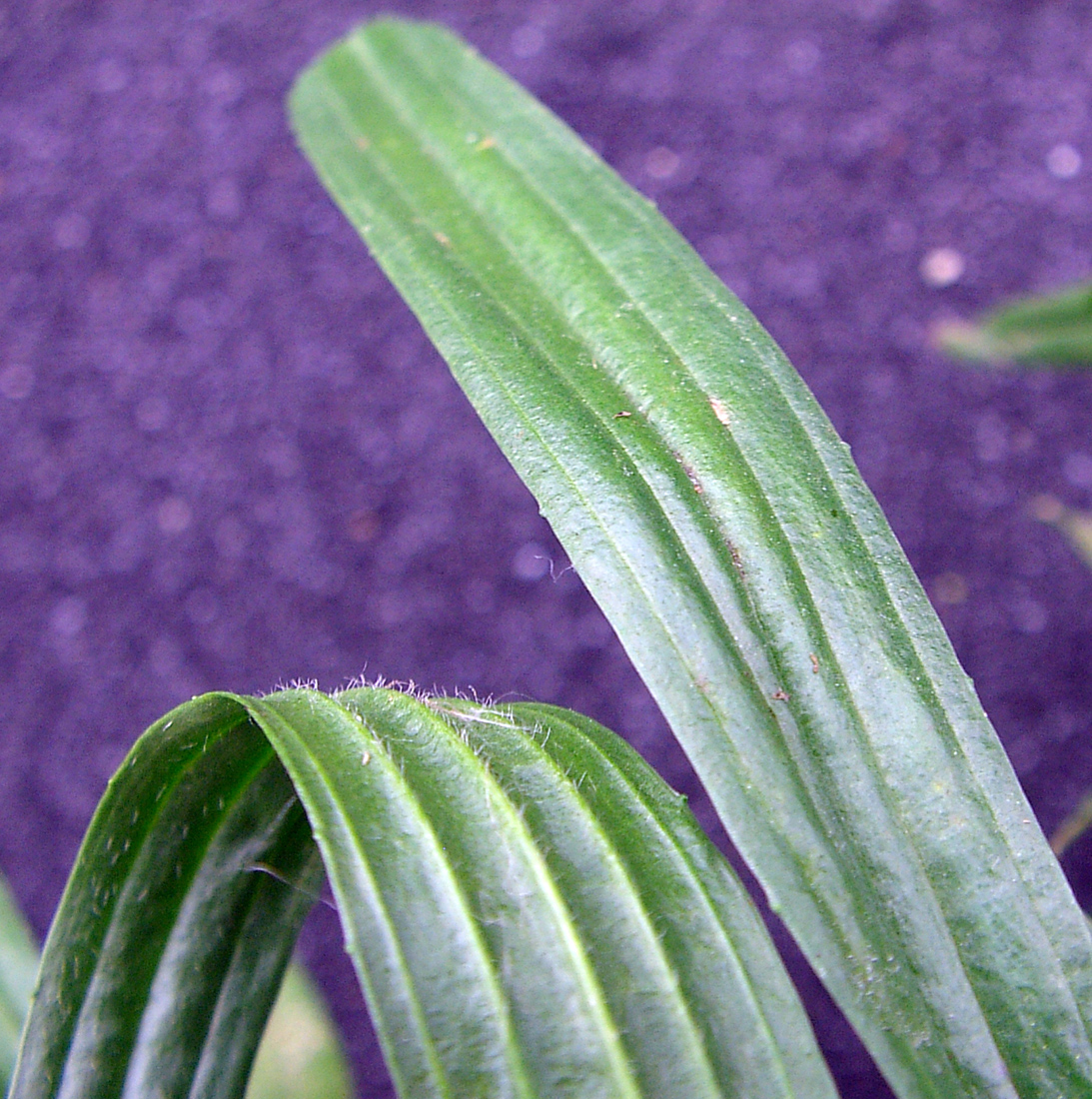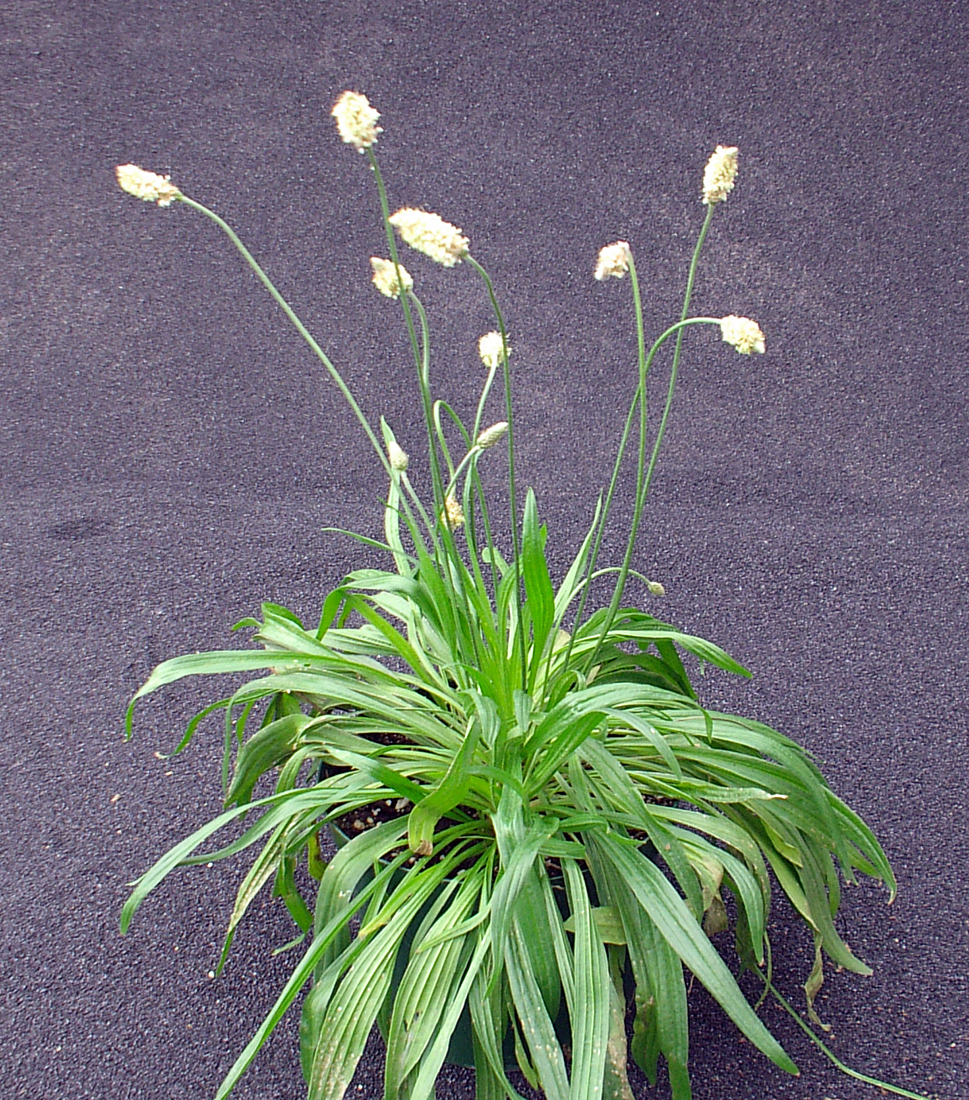Narrow-Leaved Plantain
- Plantain (Plantaginaceae family):
- Plantago lanceolata L.
- EPPO code:
- PLALA
- Other names:
- Buckhorn plantain, English plantain, ribgrass
Species information
- Lifecycle:
- Perennial.
- Propagation:
- Reproduces by seed.
- Emergence:
- Most seedlings emerge in spring or early fall.
- Habitat:
- Narrow-leaved plantain is commonly found throughout Ontario in cultivated fields, pastures, lawns and gardens, and along roadsides.
- Competitiveness:
- Typically, narrow-leaved plantain is found in older pastures and hay fields where it is more a symptom of declining forage stands. The forage quality of narrow-leaved plantain is adequate, but pollen can cause hay fever.
Identification clues
Seedling
- Cotyledons:
- Linear and very long.
- First leaves:
- Narrow-leaved plantain’s first leaves are hairy along the margins and elongated with prominent whitish parallel veins.
- Mature leaves:
- Mature leaves form in a basal rosette. They are elongated with 3–5 prominent whitish veins. Although the plant’s leaves appear smooth they have silky hairs on the leaf surface, usually near the base.
Mature plant
- Stems:
- Narrow-leaved plantain has no stem; its leaves come from a basal rosette.
- Flowers:
- Its flowers are contained in a dense cylindrical-shaped seed head at the end of a long ridged stalk that arises from the basal rosette.
- Seeds:
- Seeds are 1.5–3.5 mm long, brown and shiny, and have an indentation on one side that becomes sticky when wet, which aids in the dispersal by animals.
- Roots:
- Short taproot with fibrous roots.
Often mistaken for
I know it's not Broad-leaved plantain because the thick, oval leaves of broad-leaved plantain differ from the long and narrow leaves of narrow-leaved plantain.





Updated: January 13, 2023
Published: January 13, 2023